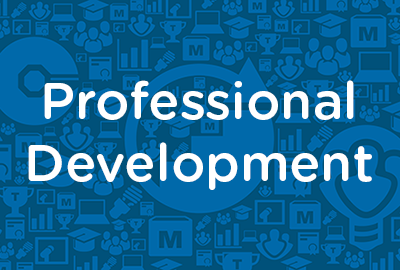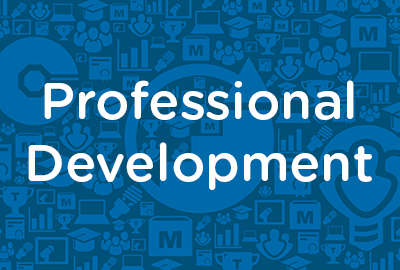 |
Creating Community Collaborations |
2.00 |
Across the country, more and more communities are forming community collaborations to address the out-of-school needs of children and youth of all ages. When different segments of the community join together, share ideas, and pool their resources and efforts to create out-of-school time initiatives, children and youth benefit. What one organization or program may not be able to accomplish alone is often achievable when partnerships and collaborations among diverse groups and individuals are formed.
When school-age care professionals are knowledgeable about what it takes to create and sustain successful collaborations, they can play an important leadership role in creating out-of-school time initiatives and programs that will meet the needs of children and youth in their communities now and in the future. |
 |
Advanced Interpersonal Communication: Customers and Vendors |
0.50 |
Your customers include anyone who uses your company or organization to obtain goods and services. Customers might be internal or external. An internal customer is a member of your organization and can be a supervisor, colleague, or subordinate. An external customer is someone from outside your organization. Each customer is of equal importance, regardless of the amount of business that customer provides to your organization. You should provide the same level of quality goods and services all your customers, and all are equally deserving of efficient and effective communication.
In this course you will learn: to respond to customers’ complaints, and to reject a vendor’s contract without rejecting the vendor, and address a complaint to a vendor. |
 |
Presentation Methods and Debriefing Activities |
2.00 |
There is no "one size fits all" approach to working with children and youth, and this is especially true when it comes to how we present and debrief activities. During this course, participants will understand the importance of the delivery and debriefing of an activity to help children and youth make meaning, as well as some specific methods that can be incorporated into the program right away. |
 |
Becoming Tech Savvy |
1.50 |
This course was designed to help you learn various tips and tricks to use your devices as efficiently as possible. This includes tech skills, safety & security information, and keyboard and mouse shortcuts. |
 |
Chest Pain - Beyond MONA |
1.00 |
A review of atypical etiologies for chest pain, provided for an intended audience of prehospital care providers. This course refreshes physiology and pathophysiology for various cardiac and non-cardiac causes of chest pain, including definitions, disease morbidity and mortality, and prehospital treatments.
This training is primarily designed to assist paramedic providers as they care for patients in the prehospital environment |
 |
Coaching: Fundamentals of Coaching (Instructor Guide) |
1.00 |
Coaching is the continuous effort to help employees maximize their abilities through personalized counseling and advice. The coaching process not only trains employees to become familiar with business procedures and expectations, but also motivates them to reach both individual and company goals.
Coaching is beneficial to employees because it encourages them to discover their worth and potential. Through proper coaching sessions, employees build confidence, improve their work habits, and increase their productivity.
In this course you will learn to:
1. Define coaching and identify the qualities of an effective coach
2. Build a coaching foundation and plan a coaching strategy.
This Instructor's Edition of this course includes notes and suggestions to assist you in presenting the material, whether in an in-person classroom setting or as an instructor-led online or distance-learning course. It also provides you with the answers to questions found in mid-lesson activities, as well as in the quiz that concludes the course. |
 |
Lemurs |
2.00 |
In this module, you'll learn about the natural history and conservation of a fascinating group of primates: lemurs. |
 |
Cross-Cultural Business Communication: Workplace Culture |
1.00 |
Culture is a way of life established by a group of people and passed on to succeeding generations. People within a culture usually share common values, beliefs, and perspectives and have the same language and communication style. Although people within a culture must live in close proximity while the culture is being established, future generations frequently relocate to other countries or regions. This creates situations of cross-cultural exchanges.
As we become increasingly diverse, there is a growing demand for cross‑cultural communication in the workplace. Technology allows us to communicate with peers across the globe, as though they were sitting in our offices. Efficient and cost-effective travel makes it possible to communicate face-to-face with clients in other countries. In addition, companies seeking diverse and highly skilled employees find a conglomeration of cultures among them. As a result, employers are emphasizing cross-cultural communication in their own organizations to prepare employees to work with diverse co-workers and clients.
In this course you will learn to: discuss the value of culture and the significance of cross-cultural communication in the workplace, and describe the impact of cultural differences on communication, and avoid miscommunication and conflicts that arise due to these difference. |
 |
Strategic Decision Making: Preparing to Make Decisions |
1.50 |
In this course you will learn to: identify the factors that influence the outcome of a decision, and follow the steps of the decision-making process, define your decisions appropriately by establishing objectives, identify the problems decision frames can present, and the actions you can take to understand decision frames, and identify the guidelines for avoiding the problem of overconfidence, and describe the techniques for managing uncertainty. |
 |
Human Relations Skill Development |
2.00 |
Being able to communicate effectively is an essential human relations skill for school-age care professionals. To be a good communicator, school-age professionals need to understand the components of communication and how the communication process works. They need to identify barriers to clear communication and develop strategies for minimizing or eliminating barriers to communication. School-age care professionals also need to work cooperatively with other team members to solve problems and conflicts. This requires an understanding of how teams work and the characteristics of effective teams. Assessing the current status of personal human relations skills helps each professional identify priorities for making improvements to these skills. |
 |
Project Management Essentials: Project Scheduling |
1.25 |
This course will focus on how to develop a project schedule by using CPM, PERT, project network diagrams, arrow charting, and Gantt charts and how to dentify the benefits of CPM and PERT, the critical path, and the methods of duration compression. |
 |
Microsoft PowerPoint - Basic: Getting Started |
0.75 |
This course will focus on how to open a presentation, identify PowerPoint interface components, switch between views, and zoom in and out. |
 |
CWNP Certified Wireless Specialist CWS-101 Exam Prep |
1.00 |
Exam Prep to accompany 30 Bird's CWNP Certified Wireless Specialist - Exam CWS-101 course. |
 |
Excellence in Service - Advanced: Customer Loyalty |
1.00 |
This course will focus on how to create customer loyalty through dedicated employees and identify the fundamentals of customer loyalty. You will also learn how to understand your customers and make service memorable. |
 |
Budgeting: Operating Budgets |
1.00 |
An operating budget is a projection of the entire income statement of a company, or department. Operating budgets manage the operations of a company or department. They include the expenses associated with manufacturing, selling, and distributing products. Operating budgets also help to administer the daily functioning of the company. They project the expenses a company will incur in its manufacturing facilities, as well as the revenue that it will generate. |
 |
Motivation: Identifying, Planning, and Implementing: Using What You've Learned |
0.50 |
In life, to be a successful, you must have a plan. Napoleon Hill, author of Think and Grow Rich, said, “Create a definite plan for carrying out your desire and begin at once, whether you ready or not, to put this plan into action.” This course has provided you with the information and—we hope—the inspiration to improve your motivational skills and work toward personal success. The final two steps are up to you: You must implement what you have learned and continue to work on improving your skills.
In this course you will learn to: work toward improving your motivational skills by using the 21-day habit and satori, and use resources, including websites and books, to continue working on your motivational skills. |
 |
Cross-Cultural Business Communication: Addressing Cross-Cultural Issues (Instructor Guide) |
1.00 |
When communicating with coworkers, it is very important to respect other cultures. You should refrain from using humor that might offend people from other cultures, and avoid stereotypes that might affect how you treat your coworkers.
Before communicating with employees who belong to a different culture, it is important to research their cultures and understand clearly what is expected from your communication. You should determine what types of communication are most appropriate in specific situations. For example, you should investigate the most appropriate method for communicating a behavioral problem to an employee. Some cultures prefer profuse praise to cushion the constructive feedback, while others prefer a more direct approach. The most important thing to communicate to employees of different cultures is respect. By approaching them in accordance with their cultural standards and expectations, you’ll show respect for their cultures and your communication will be enhanced.
In this course you will learn to: identify gestures used in different cultures and build a cross-cultural team, and discuss guidelines for writing cross-cultural documents and assembling a translation team.
This Instructor's Edition of this course includes notes and suggestions to assist you in presenting the material, whether in an in-person classroom setting, or as an instructor-led online or distance-learning course. It also provides you with the answers to questions found in mid-lesson activities, as well as in the quiz that concludes the course. |
 |
Business Ethics: Ethical Decisions (Instructor Guide) |
1.67 |
In this course you will learn to: define business ethics, describe how to balance personal values and organizational ethics, and identify common ethical dilemmas and their causes, and describe the DECISIONS method of making ethical decisions and identify the barriers to making such decisions. |
 |
Business Writing: Formal Proposals |
0.75 |
This course will cover how to create a formal proposal. You will also learn how to add visual elements to a formal proposal, and edit a proposal. |
 |
Searching Online |
0.75 |
This course covers the fundamentals of searching online. From using basic features, such as the homepage and address bar, to using "advanced search" to find very specific information, this course will cover it all. |
 |
Building Upward: Resuscitation of Anaphylactic Shock Part 3—Scenario 2 |
1.00 |
In this second of three scenarios, we discuss the transport decisions that should be considered when dealing with the potential of a medical illness and a traumatic injury. Vanessa and Medical Director Dr. Jeremy Cushman discuss a patient who has a motorcycle accident that was caused by a beesting. This exciting discussion will effectuate a review of the minimum competencies of medical and trauma care at the EMT level. Final Exam: Please read each question carefully. You will have two attempts to gain a 70% or higher on this exam. If you are not successful in two attempts, you are welcome to take the course again to gain the certification. |
 |
Excellence in Service - Advanced: Service Teams |
1.50 |
This course will cover how to implement proper training and empower employees and motivate employees and reinforce desirable behavior in them. You will also learn how to build customer service teams and select the right employees and conduct an interview. |
 |
Budgeting: Reviewing Budgets |
1.00 |
A typical budget contains information for a single year and is updated and revised periodically. Each company creates a budget that fits its unique needs. A budget can be used for many purposes, but its primary functions should be to support strategic goals and to help identify when actual results deviate from what was predicted. |
 |
Coping with Food Allergies in Child Care Spaces (CDA 1) |
2.00 |
A food allergy is a reaction within the body's immune system. It can be anywhere from mild to severe, and in some cases, it may be life-threatening. We must understand the symptoms and triggers of food allergies, the ways to prevent accidental exposure to prohibited foods, how to care for a child experiencing symptoms. This course is designed to be part of a Child Development Associate (CDA) Credential™ curriculum. It covers CDA Subject Area 1: Planning a Safe, Healthy Environment to Invite Learning. This course can also be taken as a stand-alone learning event, or as part of a broader early childhood education curriculum. |
 |
Learner Development and Individual Learning Differences |
2.00 |
This course covers the different characteristics of students and their unique learning needs. It highlights the impact of disabilities on the development of individual students and their families and how best to support them. This course will help you develop new knowledge about students and help you understand your role as a paraprofessional. It is just one of the many paraprofessional courses we offer. |


























